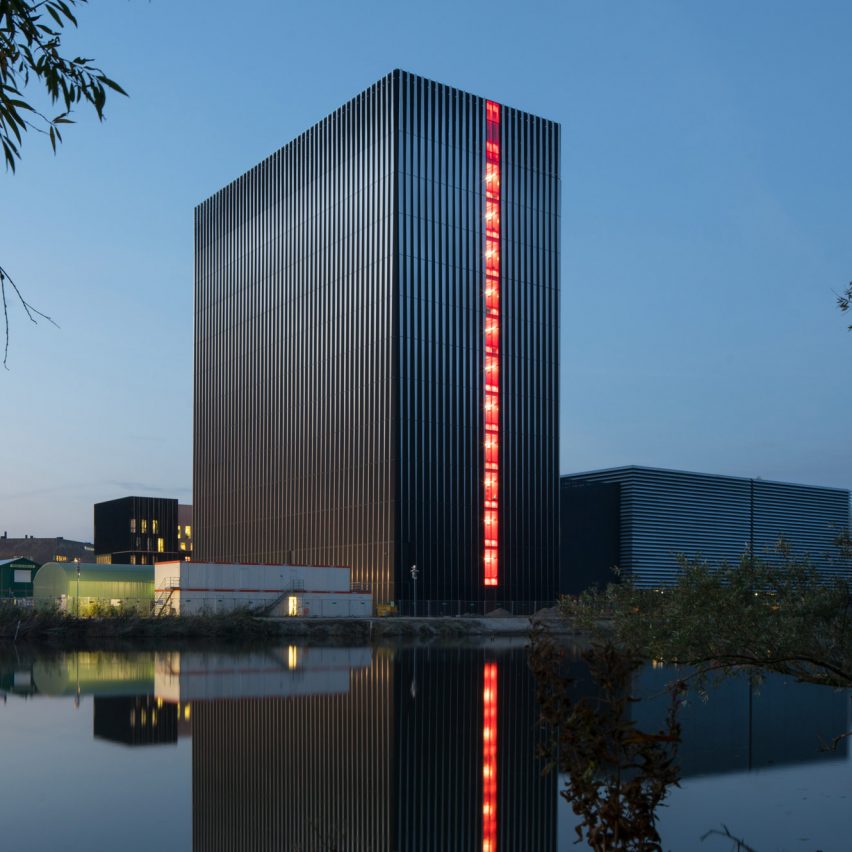
An exhibition at Roca London Gallery explores the design of data centres, a type of building that often goes unnoticed. Here, curators Claire Dowdy and Dezeen editor Tom Ravenscroft reveal eight examples that are worthy of attention.
Power House: The Architecture of Data Centres showcases a broad range of data centres from across the globe, including high-tech designs by architects, vast complexes in remote locations, and inconspicuous inner-city retrofits.
The exhibition highlights the growing importance of these buildings, which are needed to meet the ever-increasing demand for internet access.
“Data centres power modern life and yet they’re rarely considered as pieces of architecture,” said Dowdy.
“But as they mushroom across the globe, it’s time we thought of data centres as a peculiar, and peculiarly challenging, new building typology.”
“Most intriguing buildings of the 21st century”
The exhibition features real-world examples by leading designers, including Kengo Kuma and Benthem Crouwel Architects, as well as forward-thinking future concepts.
The curators hope to provoke interest in how these unusual types of buildings integrate into landscapes and cities, particularly as they are designed to be occupied by machines rather than people.
“This exhibition aims to draw attention to the weird, wonderful and largely ignored world of data centre architecture,” said Ravenscroft.
“Data centres are the most intriguing building typology of the 21st century,” he continued.
“They are essential for the daily functioning of almost every aspect of our lives, yet almost no attention is paid to them by architects or the public at large.”
Read on for eight interesting examples:
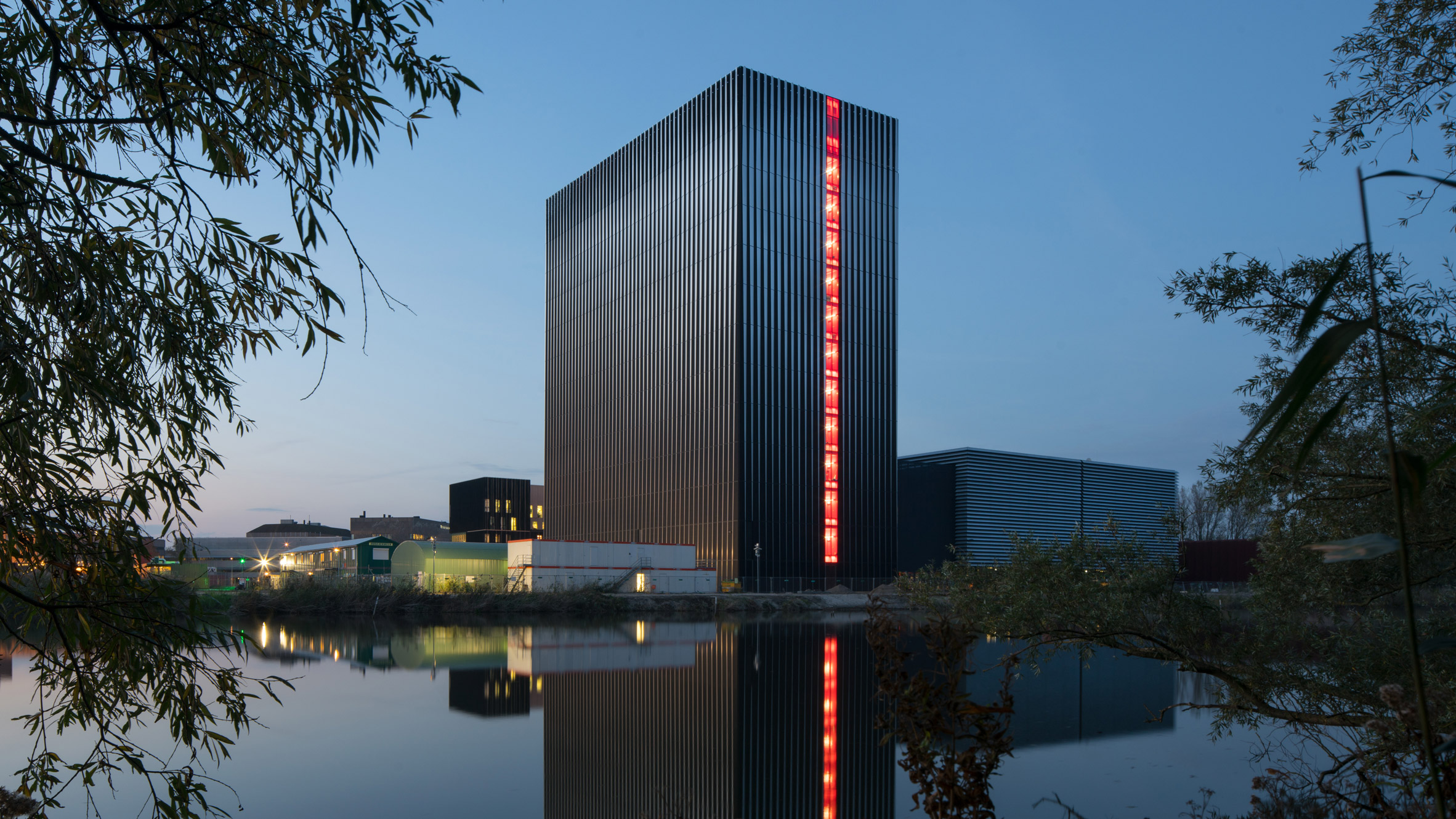
AM3 and AM4, The Netherlands, by Benthem Crouwel Architects
“Security is a top priority for data centres – that usually means tall metal fencing. But at this science park, the 12-storey AM4 tower and its squatter sister building AM3 are surrounded by a more friendly alternative: a moat,” said Dowdy.
“The taller building is clad in triangular aluminium strips, which are black on one side and silver on the other, and become narrower at the top – creating an optical illusion that makes the tower look slimmer and gives it a more human scale.”
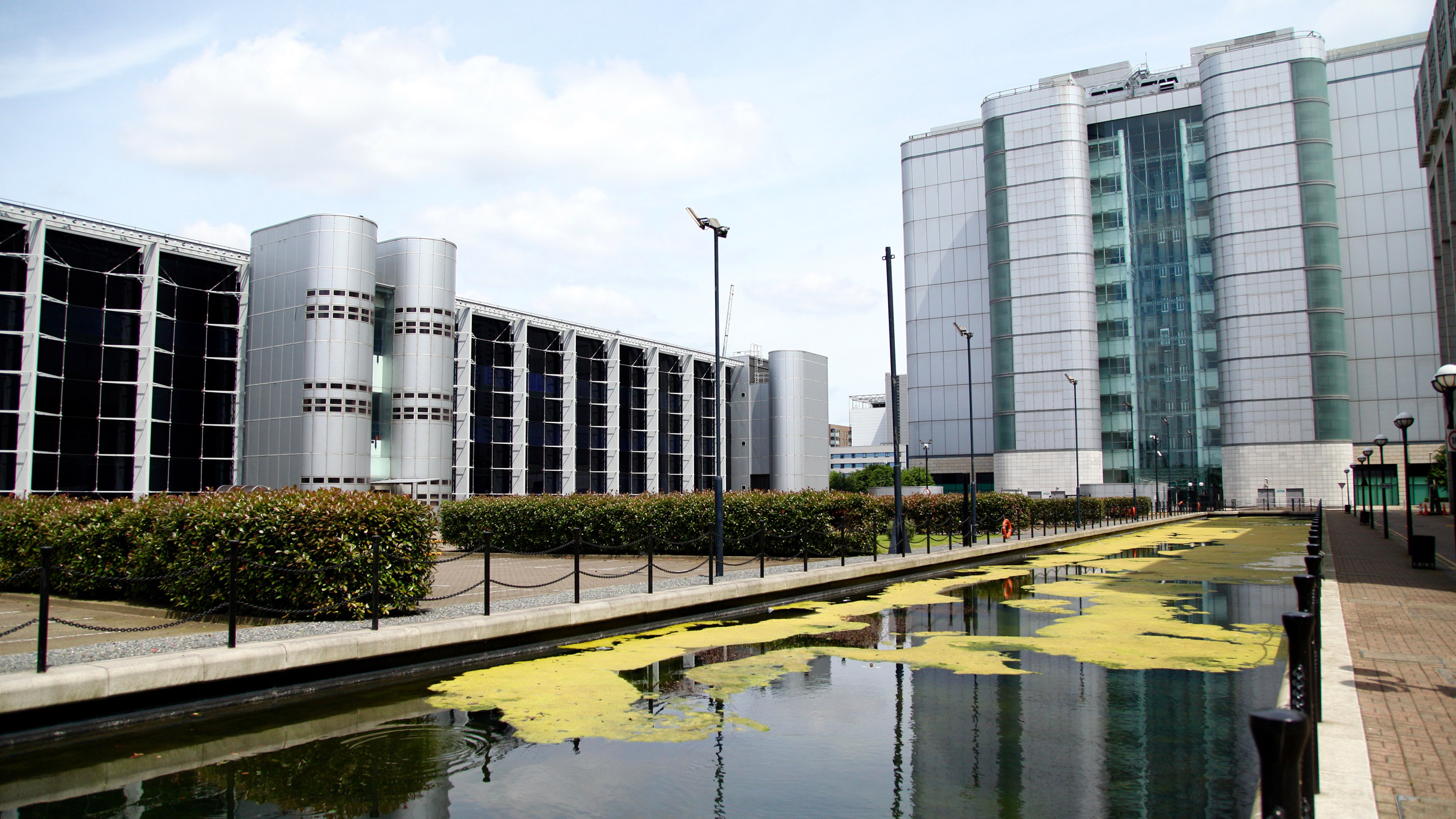
Global Switch North, UK, by Grimshaw
“Known to architecture fans as the Financial Times Printworks, this high-tech building designed by Grimshaw in the late 1980s became a data centre after the printworks relocated,” said Ravenscroft.
“Perhaps London’s most aesthetically pleasing data centre, the building poetically mirrors physical printed information being superseded by the internet.”
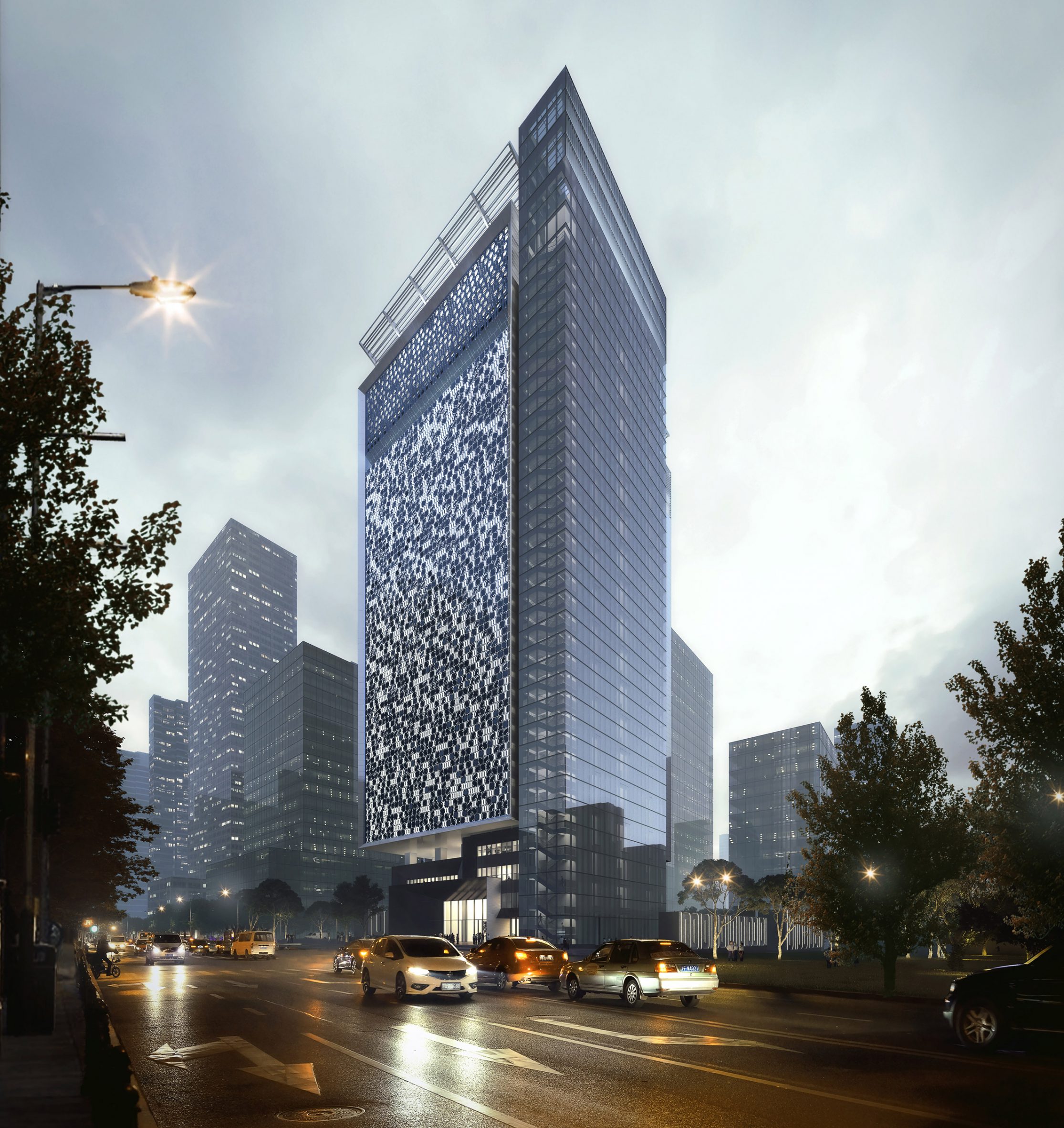
Qianhai Telecommunication Centre, China, by Schneider+Schumacher
“At 16 storeys, this will be the world’s first high-rise data centre when it completes in 2023, according to the architects,” said Dowdy.
“The cladding has a fancy design, whose movable elements reflect the sunlight. The pattern shows the binary code of the universal number Pi (π), reflecting the building’s computational theme.”
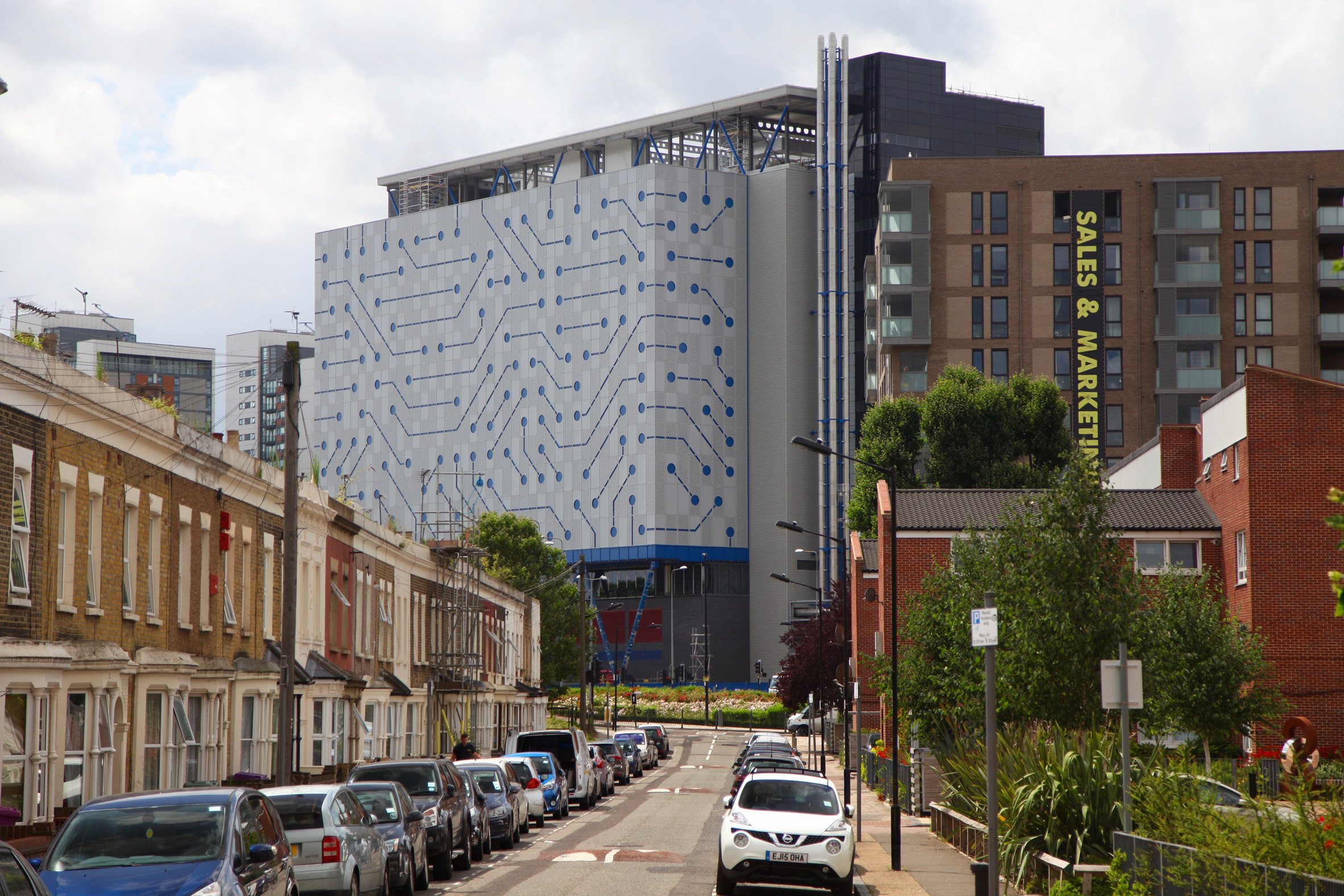
Telehouse North Two, UK, Nicholas Webb Architects
“One of London’s newest facilities, this multi-storey building in east London is described by its operators as ‘Europe’s most advanced data centre’,” said Ravenscroft.
“The 62-metre-high building occupies a prominent site at the end of a major road into London and is covered in an electronic circuit board pattern to give a hint at its purpose.”
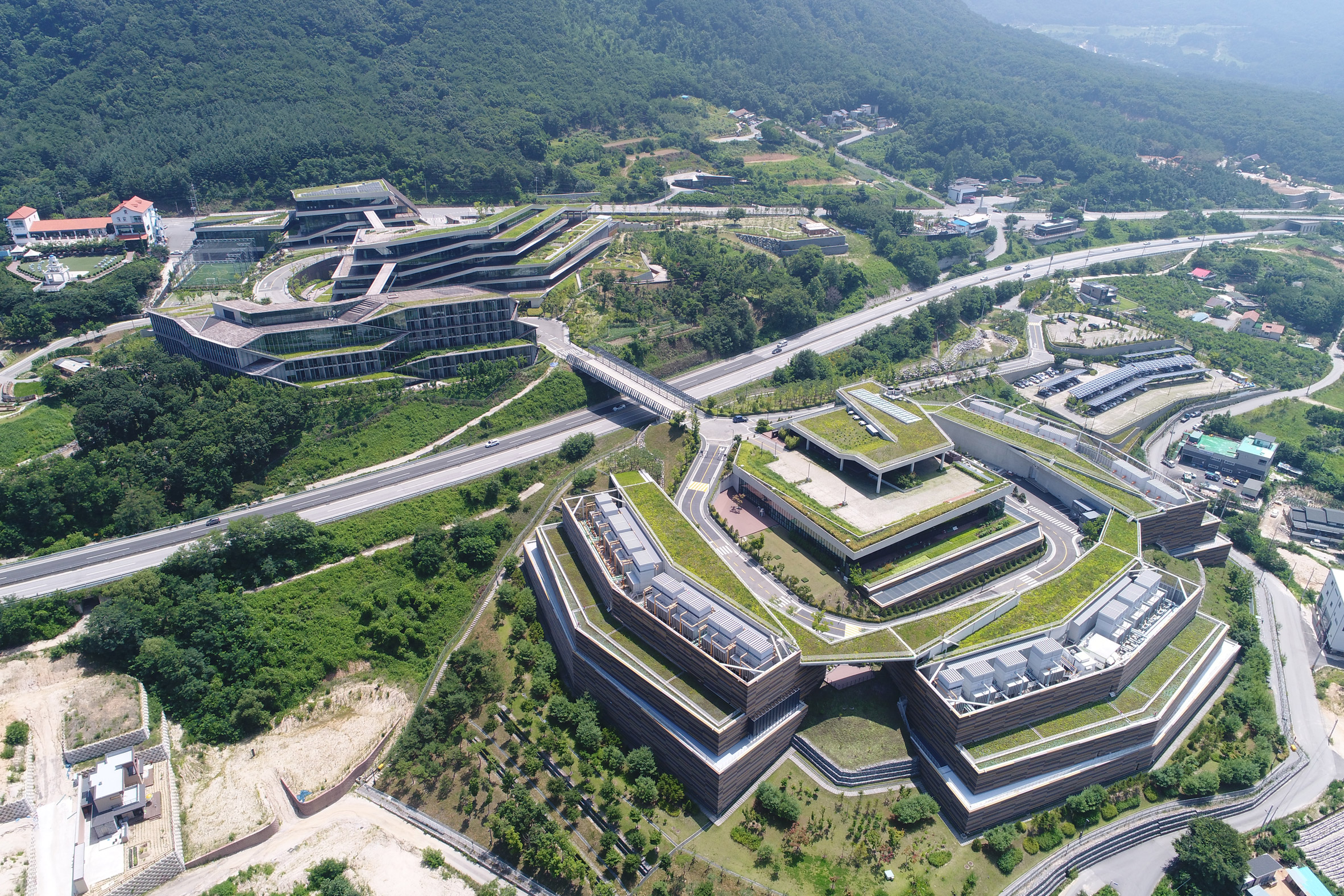
Gak Chuncheon, South Korea, by Kengo Kuma and DMP
“Sitting at the foot of Mount Gubong, these handsome low-slung buildings designed by Kengo Kuma and DMP are positioned so that the cool air that flows from the mountain’s crevices passes through the building, and naturally cools the servers,” said Dowdy.
“The building is very wide, giving it a big surface area that is exposed to wind – another cooling technique. Meanwhile, sunshade louvres block direct sunlight and glare to maximize cooling efficiency.”
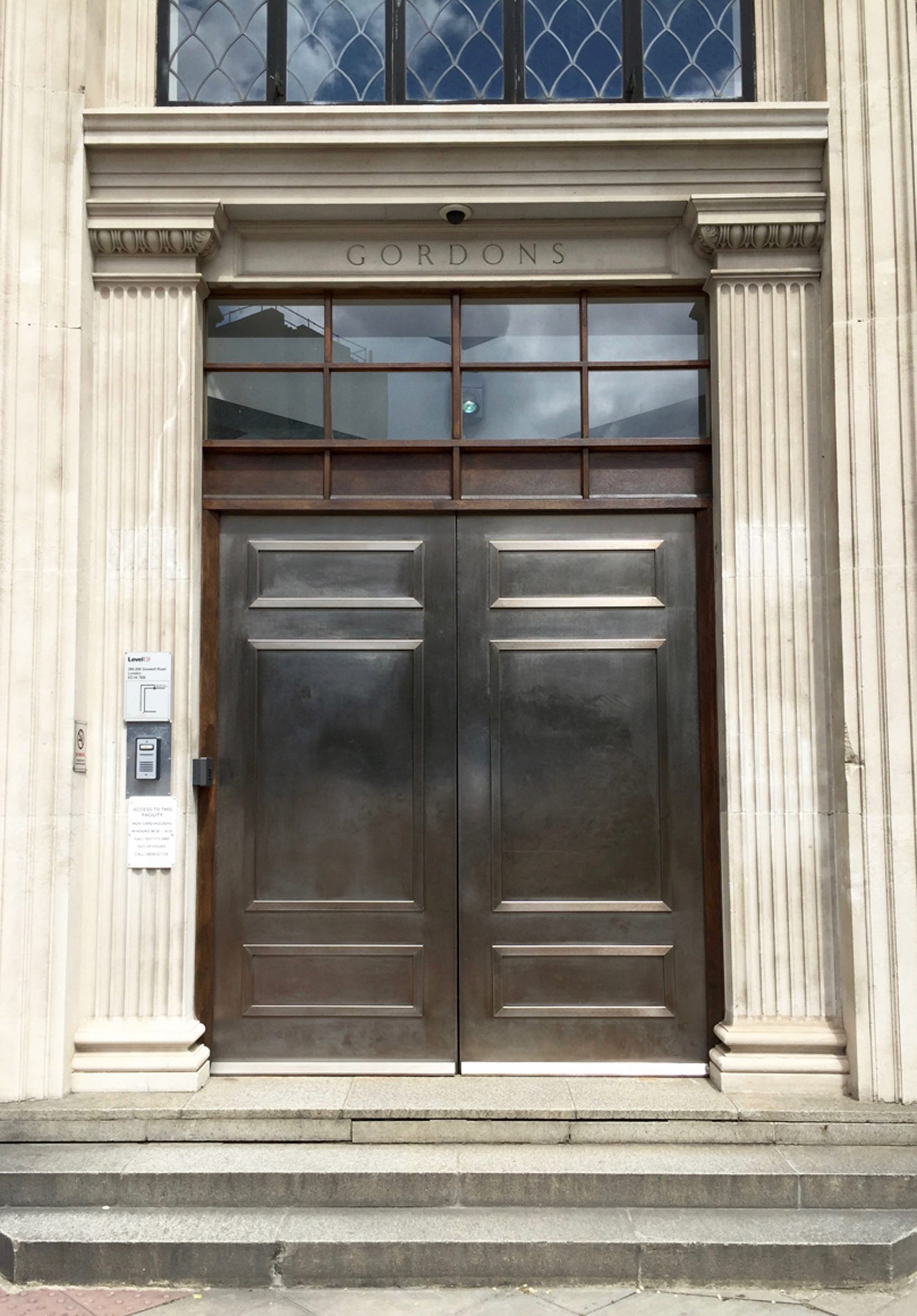
Level 3 Goswell Road, UK
“Hidden in plain sight in Angel, London, this large data centre is located in the former Gordon’s Gin distillery,” said Ravenscroft.
“On the street side its 150-metre-long original 1950s brick facade disguises the presence of a data centre, but at the rear, the mechanics and cooling systems needed to operate the data centre are clearly visible.”
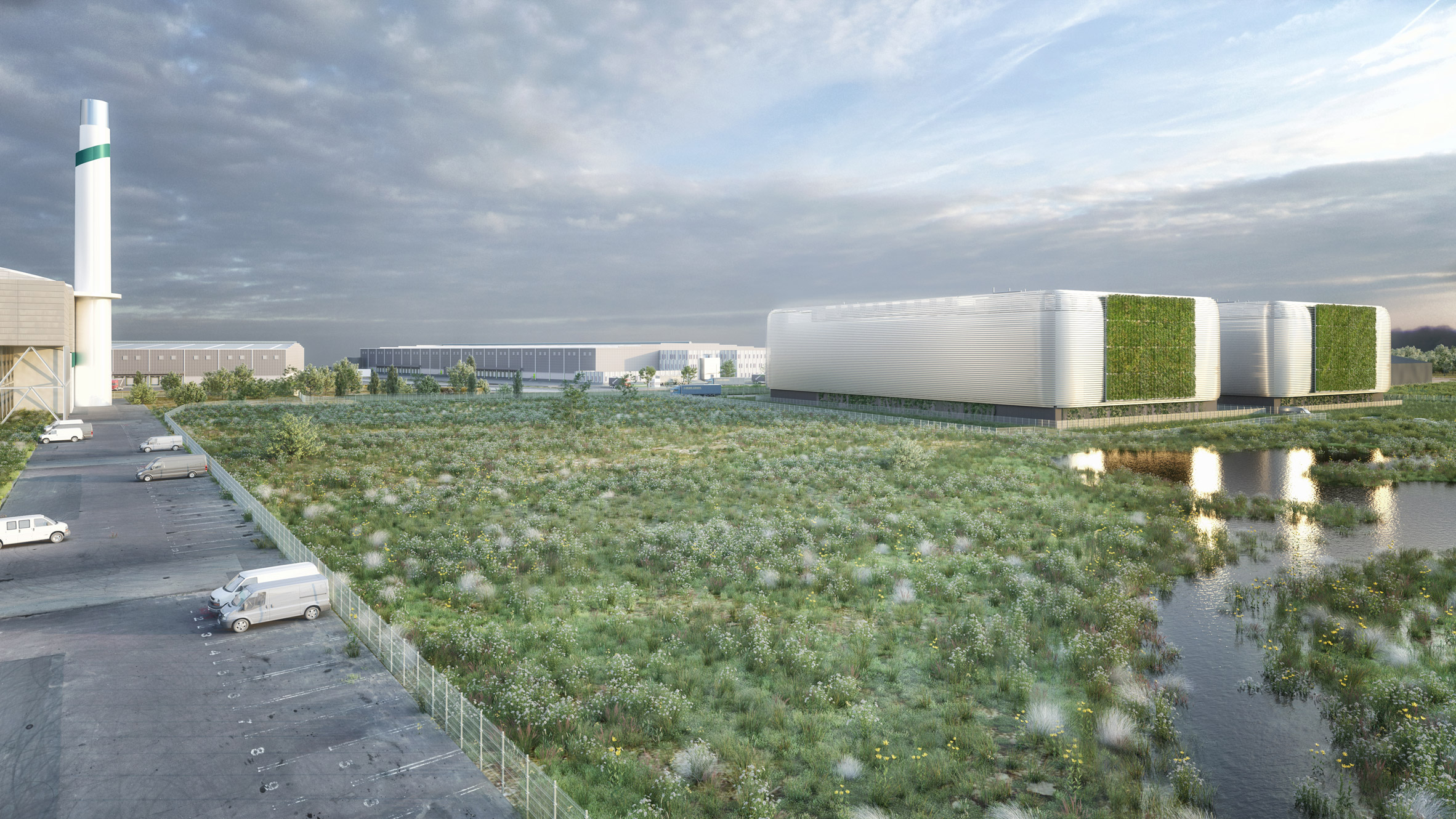
Belvedere Data Centre, UK, by Scott Brownrigg
“When this pair is completed in 2024, they will mostly be viewed from a distance, their curves acting as a welcome contrast to the neighbouring boxy warehouses,” said Dowdy.
“The facades’ outer layer will comprise horizontal bands of metal, which will wrap around the corners of the buildings. On one side, a living wall will soften their appearance still further.”
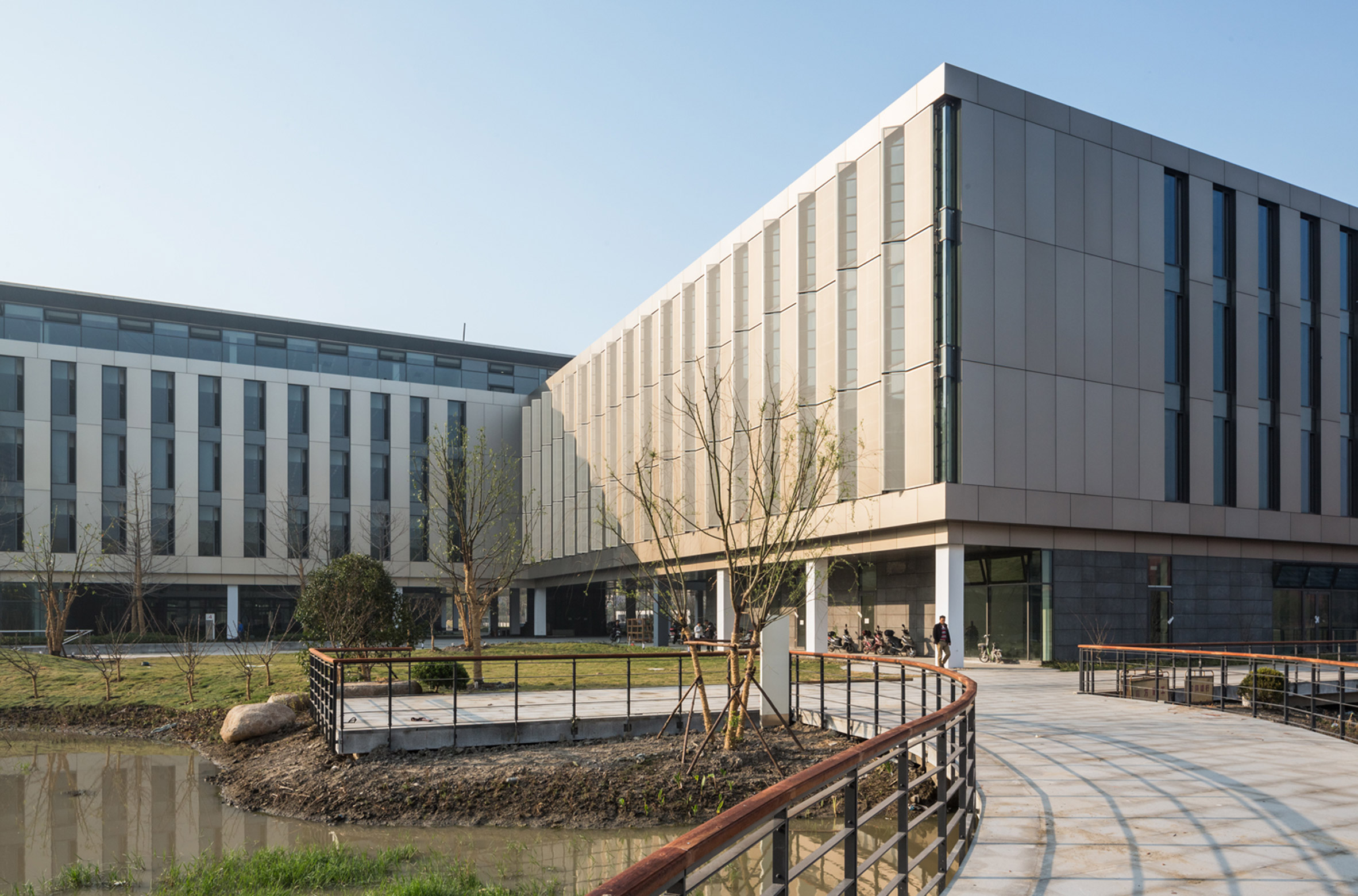
Bijou – Huawei R&D Park, China, by HENN
“The data centre on this R&D site is relatively small; it serves only this campus and so has a more human scale than the giant hyperscale data centres,” said Dowdy.
“The R&D site comprises six free-standing pavilions in a landscape of man-made hills, surrounding a large lake. Clad in anodized aluminium, the data centres and its neighbours reflect the landscape and sky,” she continued.
“Each structure has the same figure-eight shape, which symbolises infinity and wealth for the client. One side of each building is lifted to allow for direct access to the inner courtyards from the surrounding park.”
Power House: The Architecture of Data Centres is on show at Roca London Gallery from 3 November 2021 to 14 April 2022. See Dezeen Events Guide for an up-to-date list of architecture and design events taking place around the world.
The post Eight "weird and wonderful" data centres from around the world appeared first on Dezeen.
